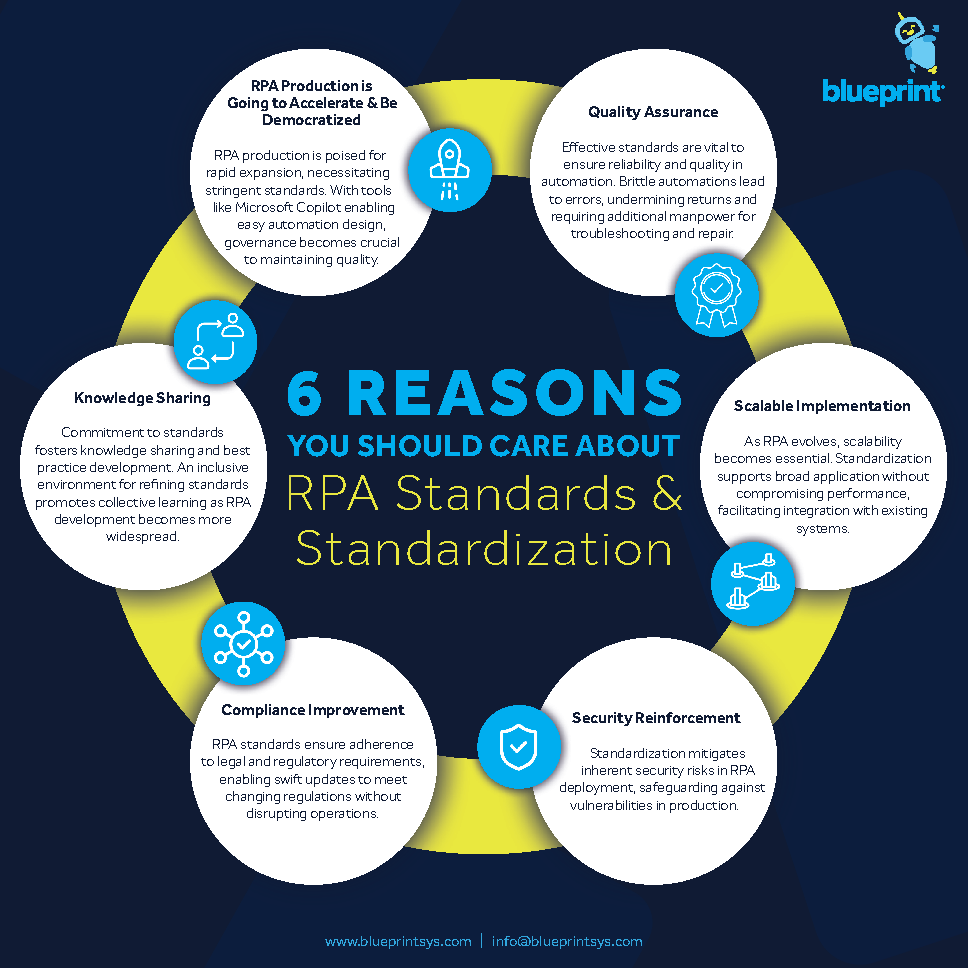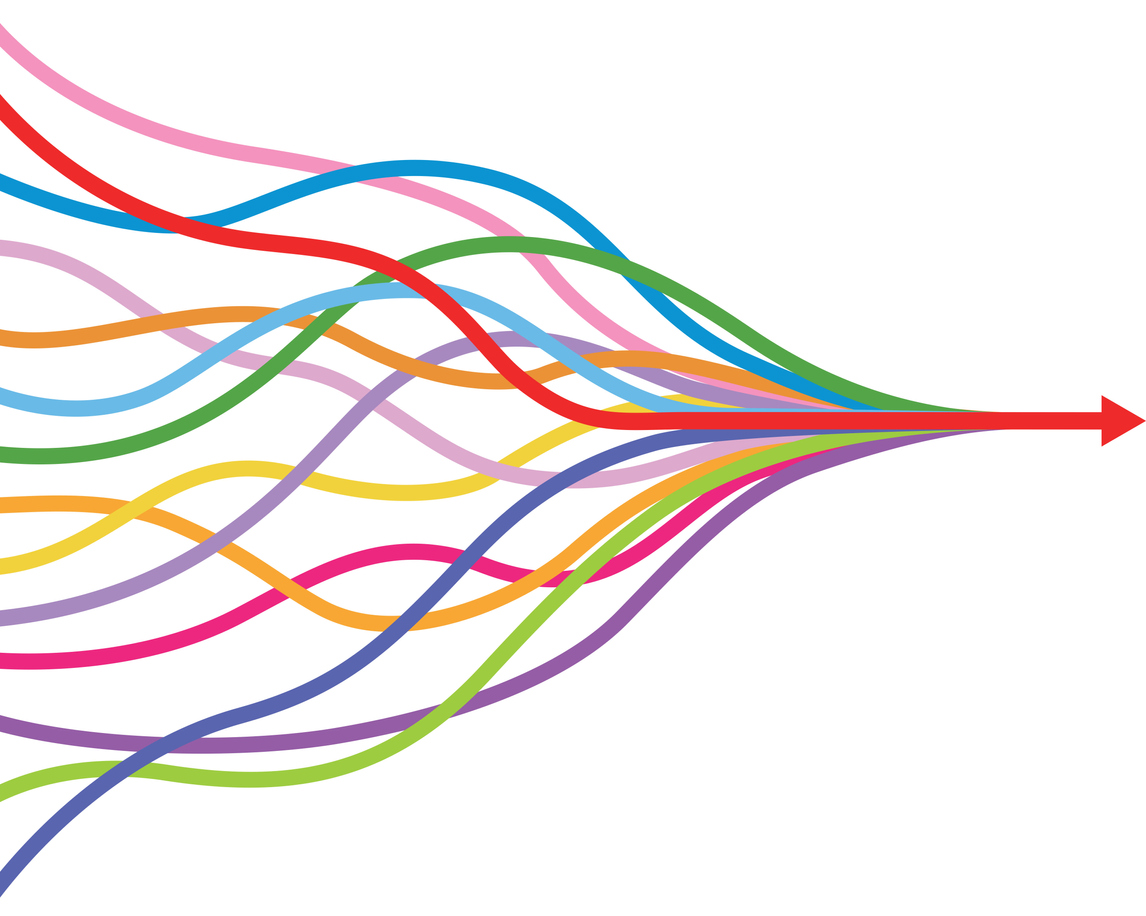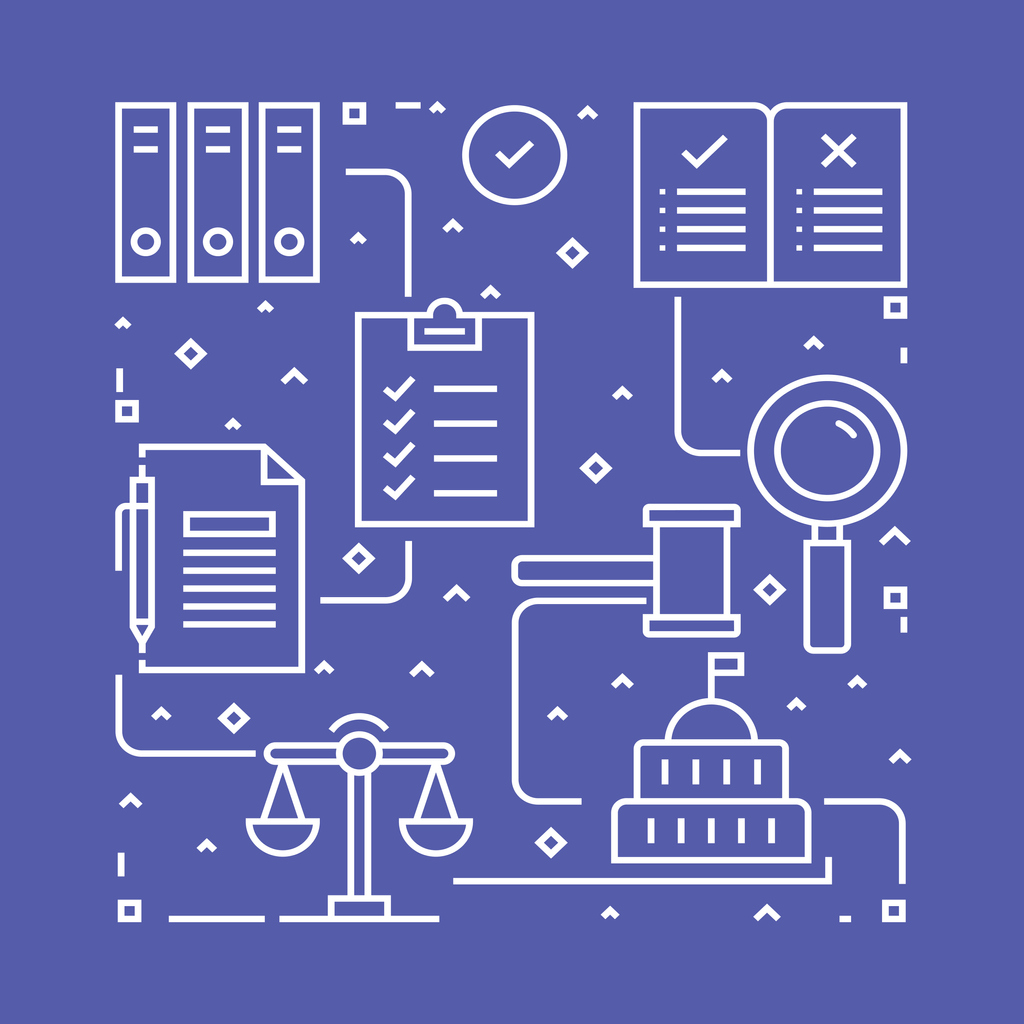6 Reasons Why RPA Standards and Standardization Are More Important Than Ever
RPA (Robotic Process Automation) governance and standardization have always been a priority for automation leaders.
With the emergence and rapidly growing popularity of AI-assisted RPA design and delivery – like what Microsoft Copilot offers – robust standards and standardization are more important than ever. In this article, we explain why.
The 6 Reasons RPA Standards and Standardization Are So Important Right Now
#1 – RPA Production is Going to Accelerate and Be Democratized
The most urgent reason RPA leaders will need to implement stringent RPA standards and standardization policies is that automation production is on the precipice of exploding.
With tools like Microsoft Copilot that enable all business users to quickly design and deliver simple automations into production, control over what’s implemented will diminish. To ensure quality and resilience, RPA programs will have to find ways to govern and enforce standards across the entire organization, not just in their RPA teams or centers of excellence.
#2 – Ensure Quality and Reliability
Beyond controlling and monitoring the automations business users are producing with the help of AI-assisted RPA design and delivery, RPA standards and standardization are necessary to enforce quality and reliability with even highly technical employees.
One of the biggest pressure points of RPA practices is brittle automations that are prone to errors and outages. If a bot is firing errors, then it’s not doing what it was intended to do, eating away at the returns it was designed to deliver. What’s more, an FTE (full-time employee) now must investigate and repair what happened with that bot.
Strong RPA standards, best practices, and standardization ensure that automations are high-quality and built to be resilient so that they don’t eat away at the ROI (return on investment) that they were implemented to produce.
#3 – Facilitate RPA Implementation at Scale
As RPA life cycles evolve, so will the complexity of business processes being automated, demanding the need for scalable RPA solutions.
RPA standardization provides a solid foundation that supports scaling RPA practices and applying automation more broadly across the business without compromising performance. Moreover, RPA standards also make integrating RPA technologies with existing systems in a company’s enterprise architecture easier.
A standardized approach to automation ensures that different RPA solutions are interoperable so they can communicate and work together seamlessly, thereby enhancing overall operational efficiency.
#4 – Reinforce Security
RPA naturally poses some inherent security risks. Standardizing RPA design and delivery ensures no vulnerabilities exist when deploying automations into production.
RPA standards for security considerations aren’t just for the average business user now empowered and enabled to deliver bots with AI assistance; it goes for the entire RPA practice.
Learn More: 5 RPA Security Questions to Ask in 2023
#5 – Improve Compliance
Whether you operate in a heavily regulated industry or not, RPA standards are necessary to ensure automations and RPA practices adhere to legal, regulatory, and industry-specific requirements.
Whether it’s how automations handle sensitive data or how audit trails are stored, standards define how compliance is met. Regulations can also change very frequently. RPA standardization that emphasizes compliance best practices during the design phase enables organizations to update their bots swiftly in response to new or amended regulations. This adaptability is crucial for maintaining ongoing compliance without significant overhauls or disruptions to operations.
#6 – Promote Best Practice Building and Knowledge Sharing
A solid commitment to RPA standards and oversight contributes to knowledge sharing and an evolving catalog of best practices. Standards should not be static—they must evolve as learning is accrued and the needs of the organization and the RPA practice change.
A collaborative environment – ideally one with a centralized tool that enables standards to be enforced and monitored through the RPA practice – where all stakeholders can refine existing standards and create new ones is key. As RPA development becomes more democratized, a collective and central knowledge base for best practices and standards will be more imperative than ever.
Conclusion
As AI-assisted RPA design and delivery becomes more popular, RPA standards and standardization will need to take a front seat in all RPA programs. Organizations will need to enforce best practices and monitor all automations being delivered into production for the following key reasons:
- RPA production is going to accelerate and be democratized
- Automation quality and reliability will need to be reinforced with more stakeholders delivering automations
- To facilitate RPA implementation at scale
- To strengthen security
- To improve compliance
- To promote best practices and knowledge sharing.
Share this
Recent Stories

INFOGRAPHIC: 6 Reasons You Should Care About RPA Standards and Standardization

The 3 Ways a Lack of RPA Standards Impacts All RPA Programs
